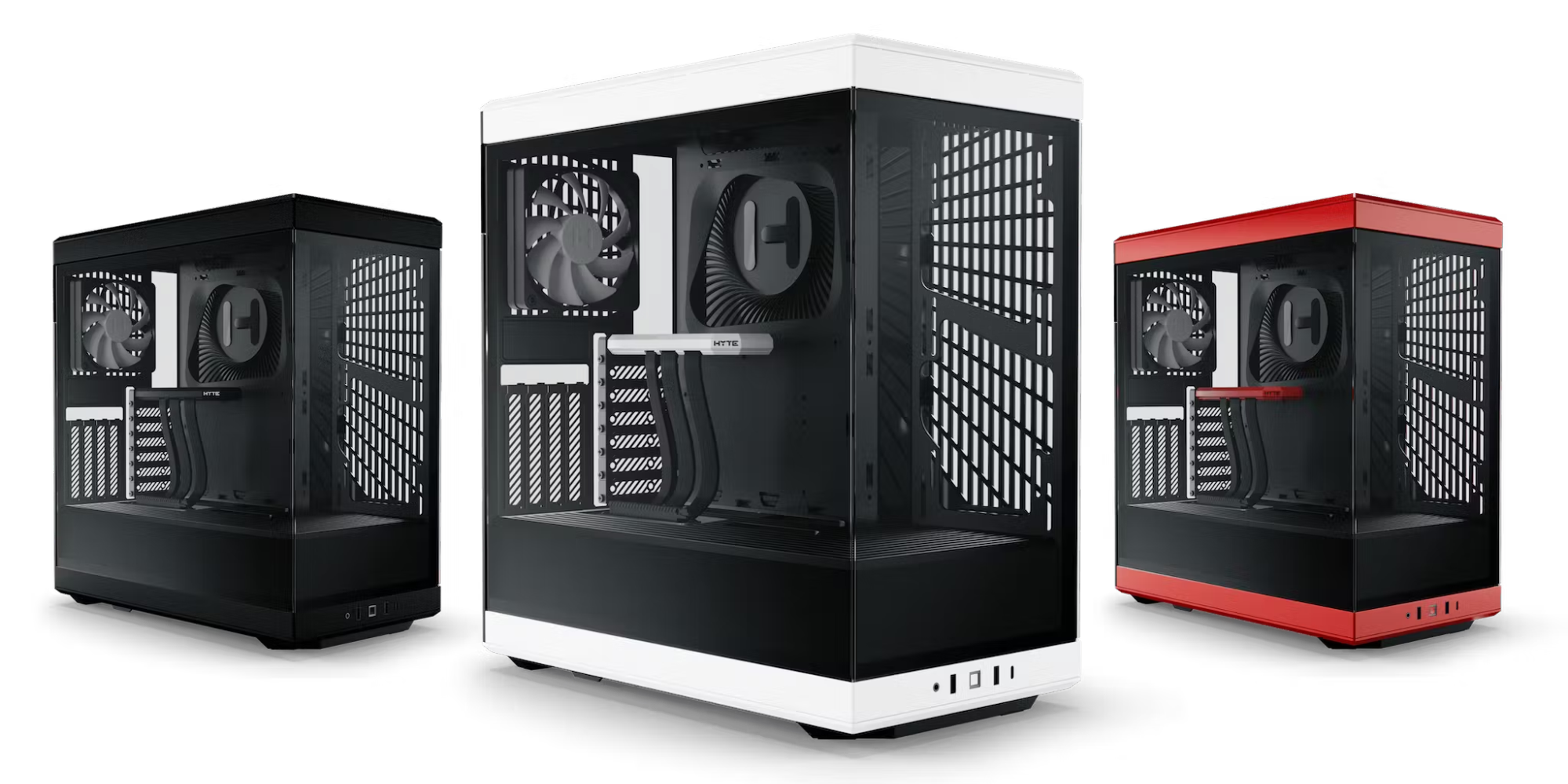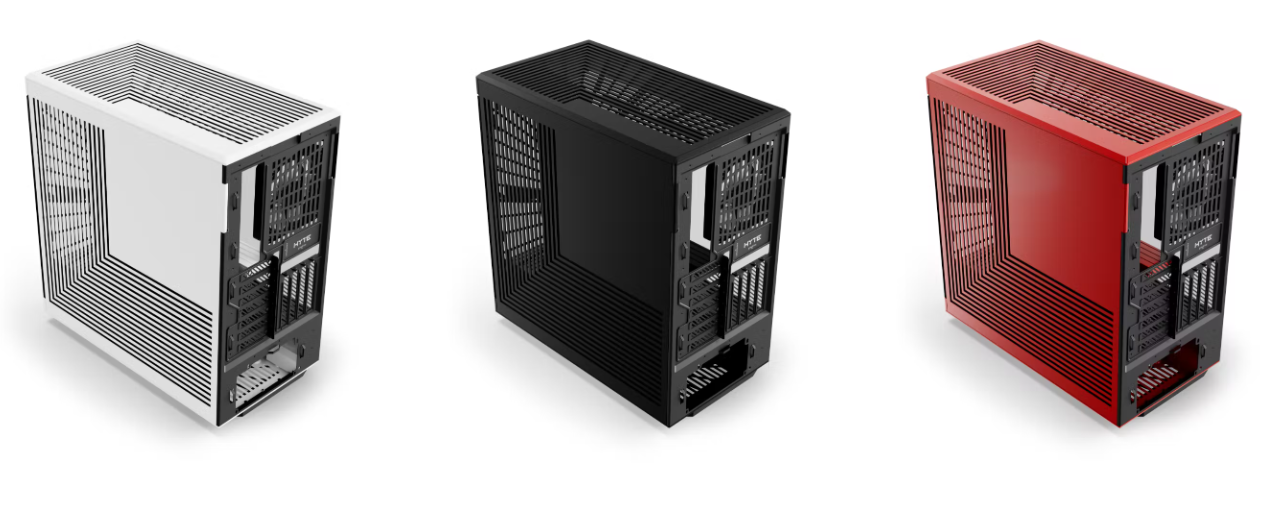Hyte's Y40 PC Case Is More Compact, Still Offers Panoramic Views of Your PC Parts
Unobstructed component views and a more traditional mid-tower shape for $149.

While Hyte's Y60 case didn't make it onto our list of Best PC Cases, largely due to its cooling performance, there's no doubt that its three glass panels, offering a fish tank style view of your PC parts, made it one of the most iconic cases of 2022. So it's no surprise that the company is looking to expand on that success here in 2023 with the Hyte Y40.
Sporting a similar aesthetic to the Y60, coming in three colors with glass on the front and side panel, the Hyte Y40 is essentially a more compact version of the Y60, with just two glass panels on the front and side, rather than the three on the Y60. The price also gets a cut to $149, rather than the $199 Y60. As you can see in the image above, the Y40 comes in white, red or black, and the case comes with a PCIe 4.0 riser cable for vertical GPU mounting. The company says RTX 4090s are supported, although the Y40 only lists support for ATX motherboards, while the Y60 lists E-ATX support. So don't expect to drop a big motherboard into the Y40.
As with the Y60, Hyte attempts to make up for the lack of airflow up front and on the side panel by offering intakes at the bottom and on the right side, near the front. The case comes with two 120 mm fans, and supports up to a 280 mm radiator on the right panel, in front of the motherboard, and up to a 360 mm radiator up top.
The Hyte Y40 is available starting today. If you're after a pre-built system and you like the looks of the Y40, Hyte's parent company iBuyPower will be offering systems using the Y40 case later this month. With high-end components getting more thermally demanding lately, it will be interesting to see if the Y40 will be able to keep its cool with those two glass panels. But to find that out, we'll have to wait for a review unit to do our usual testing.
Get Tom's Hardware's best news and in-depth reviews, straight to your inbox.
After a rough start with the Mattel Aquarius as a child, Matt built his first PC in the late 1990s and ventured into mild PC modding in the early 2000s. He’s spent the last 15 years covering emerging technology for Smithsonian, Popular Science, and Consumer Reports, while testing components and PCs for Computer Shopper, PCMag and Digital Trends.


